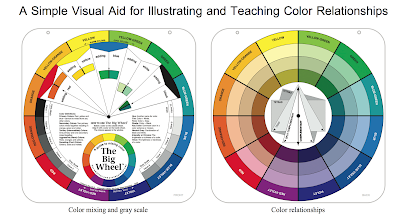Quail Creek Fine Arts Club Workshop on the Color Wheel and Color Theory: Description and Supplies
Quail Creek Fine Arts Club Workshop on the Color Wheel and Color Theory: Dec 3, 2015. 9-12 am at the Creative Arts and Technology Fine Arts Club at Quail Creek, Green Valley Arizona. by Karen Halbert, Artist, Mathematics Profesor, www.karenhalbert.com Description: I ntroduction to the history of color and color theories and color wheel, using some examples from websites. Hands-on exercises in mixing and simple color wheel construction. You may preview the actual proposed contents of the workshop by going to the posts listed to the right on this blog: Workshop Contents, Color Wheel Revisited and Color Harmony (new) . Updates made after Nov 28 listed in the Updates post to the right or scroll down. Topics and exercises covered will include: The Artist's Color Wheel. Color in space: hue, value, chroma. From Newton to RGB. Historic and contemporary artist palettes. Color Harmony. Other artist's tools: Brief demonstrations ...


